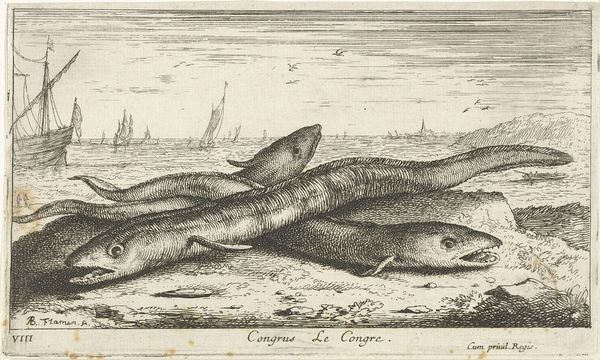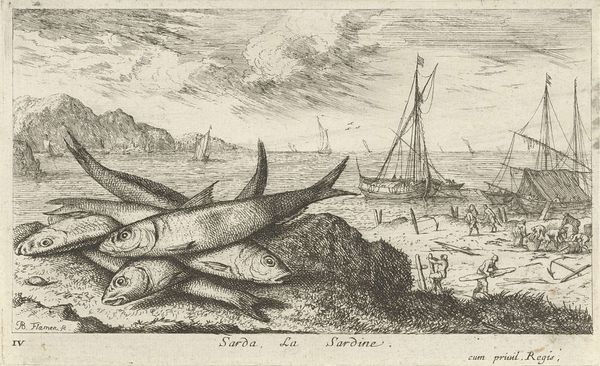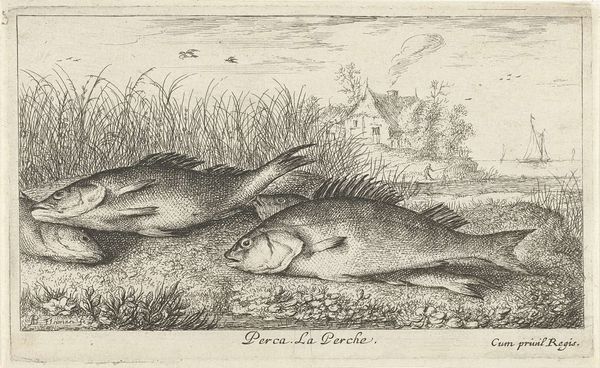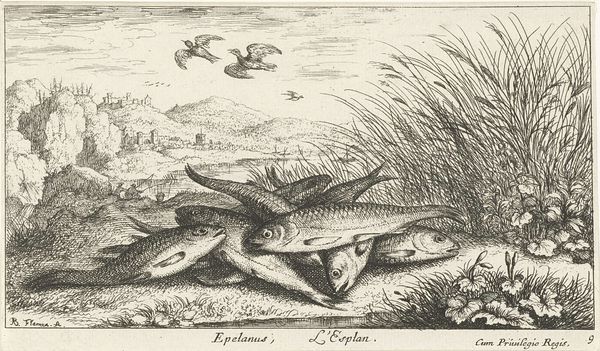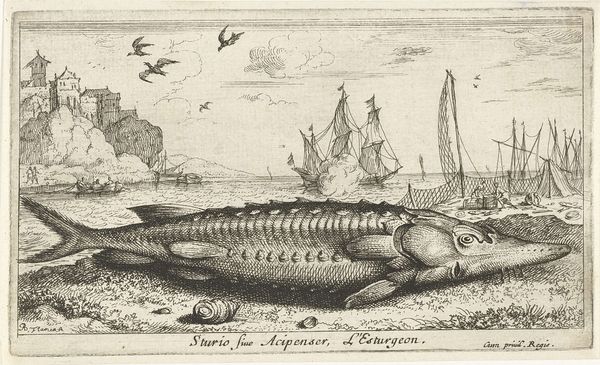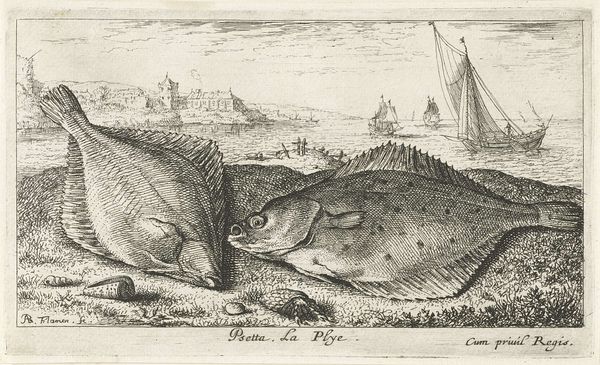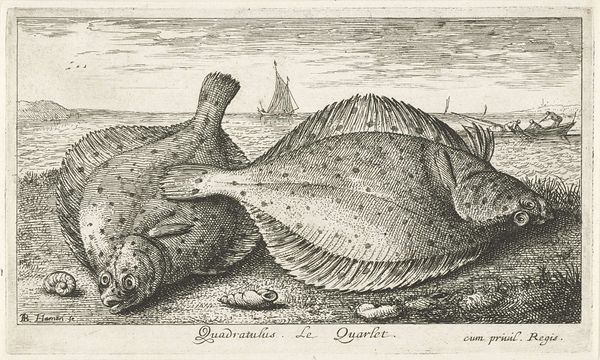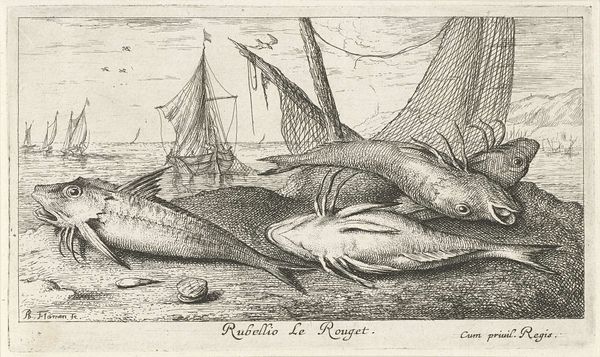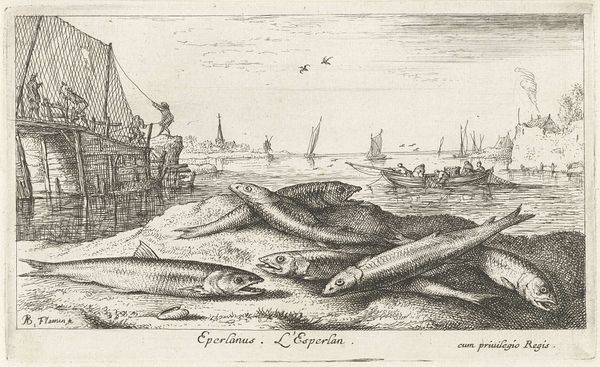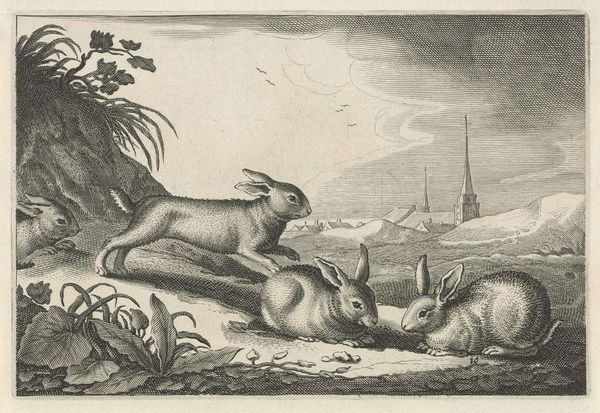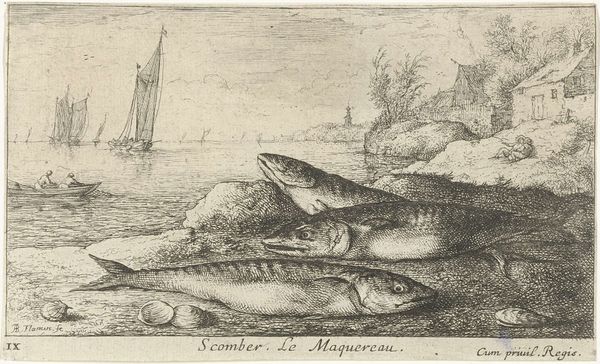
print, etching, engraving
#
dutch-golden-age
# print
#
etching
#
landscape
#
engraving
Dimensions: height 105 mm, width 170 mm
Copyright: Rijks Museum: Open Domain
Albert Flamen made this etching of three saltwater fish on a beach sometime in the 17th century. Etching is an intaglio printmaking process, where lines are incised into a metal plate using acid. First, the plate is coated with a waxy, acid-resistant substance. The artist then scratches an image into this coating, exposing the metal. When the plate is dipped in acid, the exposed lines are eaten away, creating grooves. The plate is then inked, the surface wiped clean, and the print pulled. The resulting image bears the mark of a laborious, indirect method. Look closely, and you can see the accumulation of small marks that describe the texture of the fish’s scales and the surrounding environment. Prints like this one existed in a world before photography; they were a way to widely distribute images of all kinds. In this case, the print provides us with access to Flamen’s direct observation of the natural world, mediated by the chemical and mechanical process of etching. Hopefully it encourages us to look more closely at the traces of making in all the art around us.
Comments
No comments
Be the first to comment and join the conversation on the ultimate creative platform.

